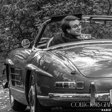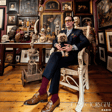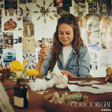
Jason Saft - How Collecting Turns Stale Listings Into Staged Showstoppers
Jason Saft is my guest today, and as the proprietor behind the award winning firm, Staged To Sell Home, it’s not often I get to chat with a collector whose job is to well, collect. Jason’s company Staged To Sell home is responsible for helping sell some of New Yorks most prominent real estate. His firm has risen to fame for their beautifully staged interiors, good enough for New York's wealthiest buyers. His job is to take a stale home and turn it into something a potential buyer can see themselves living in. We chat about the amazing case studies on his website which showcase how homes sat on the market sometimes for two years before his team comes in, subsequently selling in less than a week by the time he’s done with it, and usually over asking. As for his collecting, there’s a new 23000 square foot warehouse that holds the ever growing collection of furniture and objet, all of which he gets to look at on a daily basis. So without further adieu, this is Jason Saft, for collectors gene radio.
Staged To Sell - https://www.stagedtosellhome.com/
Case Studies - https://www.stagedtosellhome.com/casestudies
Staged To Sell Instagram - https://www.instagram.com/stagedtosellhome?igsh=MW8wNmk5Yjh1ZXd2NA==
Jason Saft's Instagram - https://www.instagram.com/jasonsaft?igsh=MXV5NXVkZ21udGZmZg==



















